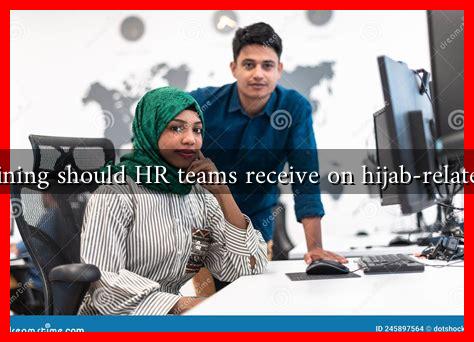-
Table of Contents
What Training Should HR Teams Receive on Hijab-Related Issues?
In today’s diverse workplace, Human Resources (HR) teams play a crucial role in fostering an inclusive environment. One area that requires particular attention is the hijab, a headscarf worn by many Muslim women as a sign of modesty and religious observance. Understanding the cultural, legal, and social implications of hijab-related issues is essential for HR professionals. This article explores the necessary training HR teams should receive to effectively manage hijab-related matters in the workplace.
The Importance of Cultural Competence
Cultural competence is the ability to understand, communicate with, and effectively interact with people across cultures. For HR teams, this means recognizing the significance of the hijab in the lives of Muslim women and understanding the broader context of Islamic practices.
- Understanding Religious Significance: HR professionals should be educated about the religious significance of the hijab, which varies among individuals. Some women wear it as a personal choice, while others may feel it is a religious obligation.
- Awareness of Cultural Diversity: Training should include insights into the diverse cultural backgrounds of Muslim women, as practices and beliefs can differ significantly across regions and communities.
Legal Framework and Anti-Discrimination Policies
HR teams must be well-versed in the legal aspects surrounding hijab-related issues to ensure compliance with anti-discrimination laws. In many countries, including the United States, the UK, and Canada, laws protect individuals from discrimination based on religion.
- Understanding Employment Laws: HR professionals should familiarize themselves with local and national laws regarding religious attire in the workplace. For instance, the Equal Employment Opportunity Commission (EEOC) in the U.S. enforces laws that prohibit employment discrimination based on religion.
- Implementing Inclusive Policies: Training should focus on developing and implementing inclusive workplace policies that respect religious practices, including the wearing of hijabs.
Addressing Bias and Stereotypes
Bias and stereotypes can significantly impact the workplace experience for Muslim women who wear hijabs. HR teams should receive training to recognize and combat these biases effectively.
- Identifying Implicit Bias: Training should include modules on implicit bias, helping HR professionals understand their own potential biases and how these can affect hiring, promotions, and workplace interactions.
- Creating Awareness Campaigns: HR teams can develop awareness campaigns to educate all employees about the hijab and its significance, fostering a more inclusive environment.
Case Studies and Best Practices
Learning from real-world examples can provide valuable insights into effective HR practices regarding hijab-related issues. Here are a few case studies that highlight best practices:
- Case Study: Starbucks – In 2018, Starbucks faced backlash for an incident involving a Muslim employee who was asked to remove her hijab. The company responded by reinforcing its commitment to diversity and inclusion, providing training for managers on cultural sensitivity.
- Case Study: Accenture – Accenture has implemented comprehensive diversity training that includes modules on religious attire. This initiative has led to a more inclusive workplace where employees feel respected and valued.
Conclusion: Building an Inclusive Workplace
In conclusion, HR teams must receive comprehensive training on hijab-related issues to create an inclusive workplace. By focusing on cultural competence, understanding legal frameworks, addressing biases, and learning from best practices, HR professionals can foster an environment where all employees feel respected and valued. As workplaces continue to diversify, the importance of such training will only grow, making it essential for HR teams to stay informed and proactive.
For further reading on diversity and inclusion in the workplace, consider exploring resources from the Equal Employment Opportunity Commission and the Human Rights Campaign.

